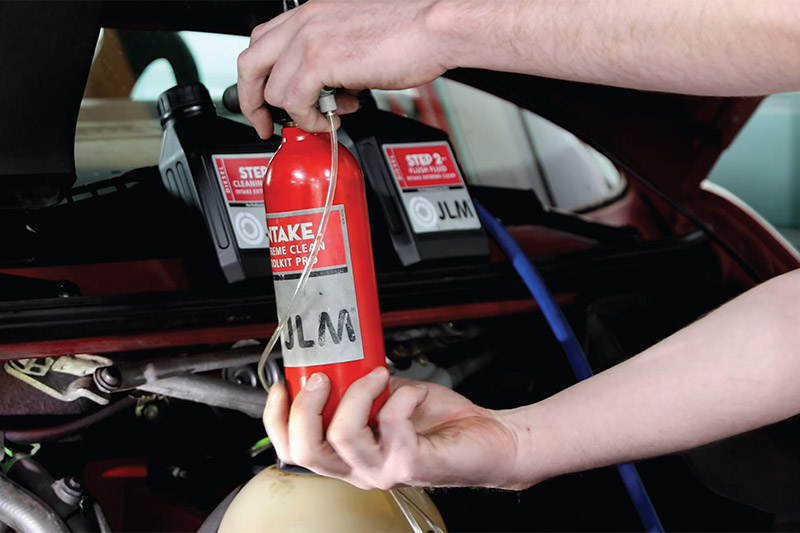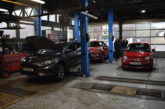
DPFs present a problem for many workshops. But, as JLM Lubricants provider Kalimex argues, a little understanding of DPF maintenance can go a long way.
Because Kalimex supplies JLM Lubricants’ products to the DPF Doctor Network we have been on the receiving end of some disturbing case studies over the years including those where motorists have attempted to maintain the DPF on their own vehicle – only to be told when they take it to a DPF Doctor that their attempts have caused the DPF to be damaged beyond repair. Sadly too, some garages have a part to play in contributing to this problem too.
If you are to become renowned as a garage with a gold standard reputation for fixing DPFs, what can you do to stand apart from other garages with little experience and technical know-how? The answer is three pronged:
- Educate your customers on how they can maintain their DPF – the key dos and don’ts.
- Ensure that when you service vehicles with a DPF that you conduct additional checks – which may go beyond your current service offering.
- Educate yourself. Find your local DPF Doctor so that you can talk to them or refer more complex DPF problems. Or become a DPF Doctor! First class, up-to-date DPF training is what sets apart the garages from those operating as DPF specialists but who may lack the expertise to really become first time DPF fixers.

Some tips to start the process
Advise customers on what they can do to keep their DPF in good condition plus the part you play.
- Start by explaining what the DPF actually is and its function. It’s astonishing how many motorists do not have a clue until the DPF warning light illuminates and they scramble to the handbook. By then it can be too late. You want customers to focus on doing everything they can to keep the DPF working well.
- Find out how each customer drives their vehicle. For example, stop/start short journey driving can cause DPFs to block. Advising them of the solution – a 20-30 minute drive on a motorway/dual carriageway at a consistent speed of around 50-60 mph every few weeks should ensure the DPF regenerates naturally. In such cases recommend regular use of a preventative additive such as JLM Lubricants’ ReGen Plus, which assists DPF regeneration, even at lower temperatures.
- Advise your customers of the importance of regular servicing. A blocked DPF can be caused by problems in a vehicle ranging from a blocked EGR valve to dirty or incorrect oil. If customers are not having regular vehicle servicing, they are storing up DPF problems for the future. For example, with on-board dosing systems, a set amount of the DPF refill fluid is injected into the fuel to help the soot in the DPF filter to burn off at a lower temperature. However, when the vehicle is in passive regen with an empty tank it cannot complete this cycle. So, it attempts more passive regens, diluting the engine oil and creating so much heat in the DPF that it destroys itself. It is unlikely that customers are familiar with the on-board dosing system that delivers DPF refill fluid and the importance of keeping it topped up. Worryingly, talking to DPF Doctors it has become clear that not every garage servicing a vehicle picks up on this. For example, one DPF doctor customer kept having his vehicle serviced and seen every few weeks post-service by the dealership garage because the DPF light remained on. The problem was simple enough: an empty DPF refill fluid tank. But this was only picked up when the vehicle was in limp mode and the DPF had become so badly damaged it was scorched beyond repair. It took a DPF doctor to deliver the news that had the dealership garage picked up on this on the numerous times it has been taken to them, the DPF would not have become damaged beyond repair.
- Clean Oil: Explain to customers the importance of sticking to the regular servicing schedule so that the oil can be changed (including an engine oil flush as part of the process). Carbon and diesel will accumulate in the oil, particularly on vehicles that are struggling to complete DPF regen cycles. This contamination will promote blockages. Clean oil helps protect the DPF.
- Clean air: Modern diesel engines are designed to trap emissions’ contaminants within the engine and exhaust thereby stopping them entering the atmosphere. One of the major drawbacks is that oil vapor is recirculated via the air intake with the intention of burning this off via the combustion process. The problem is that the oil contaminates the air intake which in turn traps soot particles, slowly constricting the air flow and the performance of the engine. Using a professional air intake cleaning process, such as the JLM Diesel Intake Extreme Clean System, will maintain engine performance, reduce emissions, and protect the DPF.
- Turbo: A dirty turbo will not just affect the power of the engine; it will also lead to increased soot levels in the exhaust. This in turn adds extra load on the DPF resulting in premature failure. Explain to your customers that maintaining the turbo with an effective turbo cleaning additive such as the JLM Lubricants Turbo Cleaner will not only boost performance and economy it will also improve the effectiveness and life of the DPF.
- Talk to your customers regularly. Encourage them to contact you at the first sign of any DPF problems, especially if the DPF warning light is illuminated. The sooner they talk to you, the more chance you have of solving the issue before it becomes a more serious and expensive problem; one that ultimately could have been avoided.









